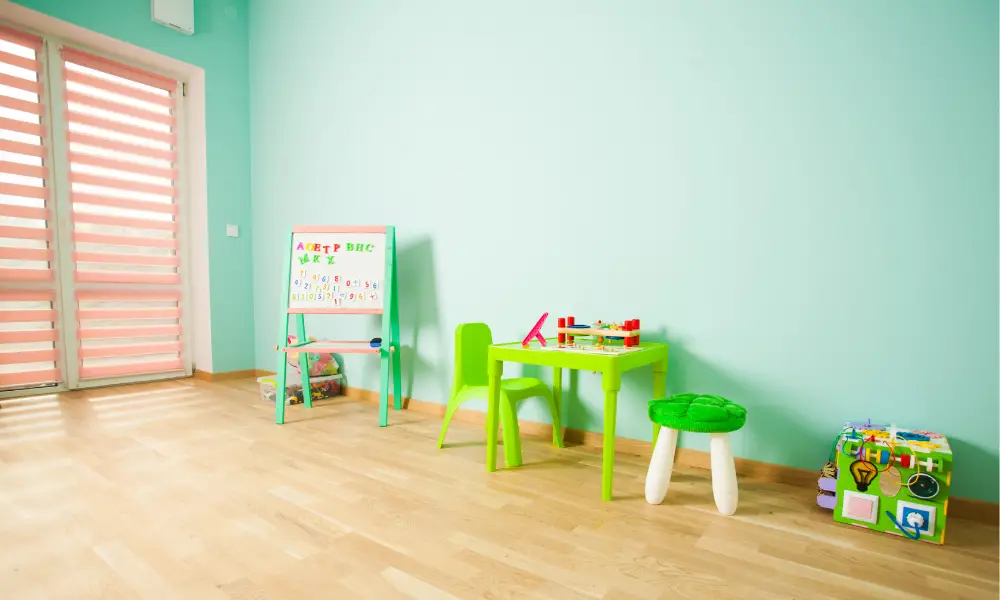Starting a home daycare is a rewarding and fulfilling venture for individuals who have a passion for working with children. Not only does it offer the chance to foster a nurturing and stimulating environment for young minds, but it also provides the flexibility of working from home. If you have a genuine love for children and possess the necessary skills, opening a home daycare can be a viable and fulfilling business opportunity. In this article, we will explore the key steps involved in starting a home daycare and provide valuable insights to help you embark on this exciting journey.
Step 1: Research And Planning
Before diving into the process of starting a home daycare, it’s crucial to conduct thorough research and create a comprehensive business plan. Here are some essential aspects to consider during this initial phase:
Licensing And Regulations: Familiarize yourself with the licensing requirements and regulations in your area. Contact your local licensing agency or child care resource center to understand the specific guidelines and qualifications you must meet to operate a home daycare legally.
Safety And Health Standards: Ensure your home meets the safety and health standards required for a daycare facility. This includes having sufficient space, childproofing the premises, maintaining appropriate ratios of children to caregivers, and having necessary safety measures in place.
Market Analysis: Evaluate the demand for childcare services in your area. Research the existing competition, identify your target market, and determine the unique aspects that will set your home daycare apart from others.
Financial Planning: Develop a realistic budget that covers both the initial setup costs and ongoing expenses. Consider factors such as insurance, equipment, toys, supplies, and marketing efforts. Additionally, explore potential funding sources, such as personal savings, loans, or grants.
Step 2: Licensing And Legal Considerations
To operate a home daycare, you will need to comply with licensing requirements and fulfill legal obligations. Here are the key steps involved:
Licensing Process: Contact your local licensing agency and obtain the necessary application forms. Complete the required paperwork, which typically includes a background check, a safety inspection of your home, and health assessments for all family members.
Insurance: Purchase liability insurance to protect your home daycare from potential accidents or injuries. Consult an insurance professional to determine the coverage that suits your specific needs.
Business Registration: Register your home school as a legal business, such as a sole proprietorship or a limited liability company (LLC). Talk to a lawyer or accountant to find out what the legal effects are and which form is best.
Step 3: Designing Your Space
Creating a stimulating and safe environment is crucial for the development and well-being of the children in your care. Consider the following aspects when designing your daycare space:
Layout And Organization: Plan the layout of your home daycare, considering designated areas for play, rest, meals, and activities. Ensure there is ample space for children to move around comfortably and engage in various activities.
Safety Measures: Implement safety precautions such as childproofing cabinets, installing outlet covers, securing furniture, and maintaining a clean and hygienic environment.
Educational Materials: Provide age-appropriate toys, books, and learning materials that promote cognitive, social, and physical development. Incorporate activities that encourage creativity, problem-solving, and exploration.
Outdoor Space: If possible, create an outdoor play area that is secure and well-maintained. Include equipment like swings, slides, and sandboxes to foster outdoor play and physical exercise.
Step 4: Policies And Procedures
Establishing distinct policies and procedures is crucial for maintaining order and facilitating the operation of your home daycare. Consider the following elements:
Operating Hours: Define your daycare’s hours of operation, including opening and closing times. Clearly communicate these to parents to avoid any confusion.
Enrollment And Attendance: Establish guidelines for enrollment, including admission criteria, required documentation, and maximum capacity. Develop a system for tracking attendance and maintaining accurate records.
Daily Routine: Create a structured daily routine that includes age-appropriate activities, meals, nap times, and outdoor play. Communicate the schedule to parents, so they are aware of their child’s daily experiences.
Health And Safety Policies: Develop policies related to illness, medication administration, emergency procedures, and hygiene practices. Clearly communicate these policies to parents and ensure they are followed diligently.
Step 5: Marketing And Promoting Your Home Daycare
To attract clients and build a solid reputation for your home daycare, effective marketing is essential. Consider the following strategies:
Online Presence: Create a professional website and utilize social media platforms to showcase your daycare’s services, facilities, and testimonials from satisfied parents. Maintain an active online presence to engage with potential clients and answer their queries.
Local Networking: Establish connections with local schools, pediatricians, parenting groups, and community centers. Attend community events and distribute flyers or business cards to promote your home daycare.
Word-Of-Mouth Referrals: Encourage satisfied parents to refer your daycare to their friends, family, and colleagues. Give them benefits, like savings or money for referring their friends, to get them to talk about your services.
Conclusion
Starting a home daycare can be a fulfilling and lucrative venture for individuals passionate about caring for children. By following the steps outlined in this article, conducting thorough research, and carefully planning each aspect of your business, you can create a nurturing and stimulating environment for children while building a successful home daycare business. Remember that it takes hard work, a willingness to keep learning, and the ability to change with the needs of the children in your care.



